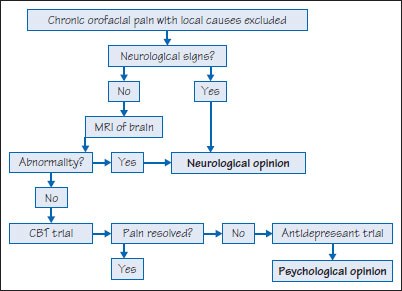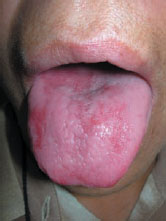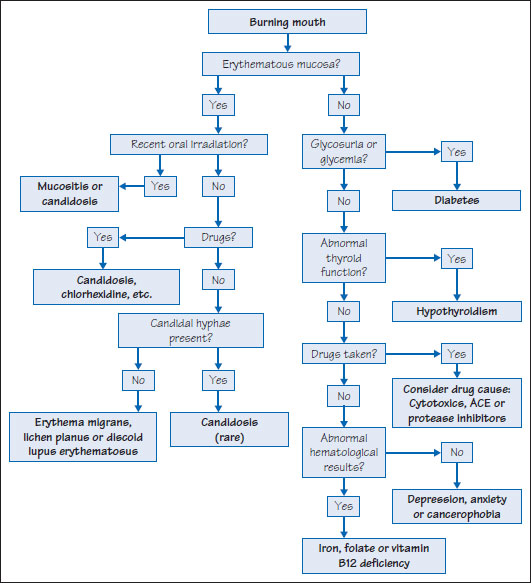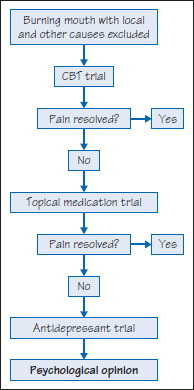51 Neurological conditions and pain: Psychogenic (idiopathic facial pain, idiopathic odontalgia, and burning mouth syndrome (oral dysesthesia))
Figure 51.1 Management of idiopathic facial pain (IFP). CBT, cognitive behavioural therapy.

Figure 51.2 Pernicious anemia glossitis causing burning sensation.

Figure 51.3 Diagnosis in burning mouth. ACE, angiotensin converting enzyme.

Figure 51.4 Management of burning mouth syndrome.

Persistent idiopathic, or unexplained (atypical) facial pain (IFP)
Definition: A constant chronic (> 6 months) orofacial discomfort or pain, defined by the IHS (International Headache Society) as “facial pain not fulfilling other criteria”.
Prevalence (approximate): 0.5–1% of population.
Age mainly affected: Middle-age or older.
Gender mainly affected: F > M.
Etiopathogenesis: IFP falls into the category of medically unexplained symptoms (MUS). Most MUS seem to have no known organic cause, rather a psychogenic basis, but a patient suffering pain may well also manifest psychological reactions to it. Most sufferers are or have been under extreme stress, such as concern about cancer, a few have hypochondriases, neuroses (often depression) or psychoses.
Positron emission tomography shows increased brain activity, suggesting an enhanced alerting which may lead to neuropeptide release and free radical production, which might cause cell damage and release of pain-inducing eicosanoids (e.g. prostaglandins).
Diagnostic features
History
Oral: IFP is often a dull boring or burning continuous poorly localised pain (rarely as severe as trigeminal neuralgia). The pain persists during the day, but does not disturb sleep. The pain is confined initially to a limited area (unrelated to the trigeminal nerve distribution) on one side only, but may spread. Other characteristics are a lack of objective signs, an/>
Stay updated, free dental videos. Join our Telegram channel

VIDEdental - Online dental courses


